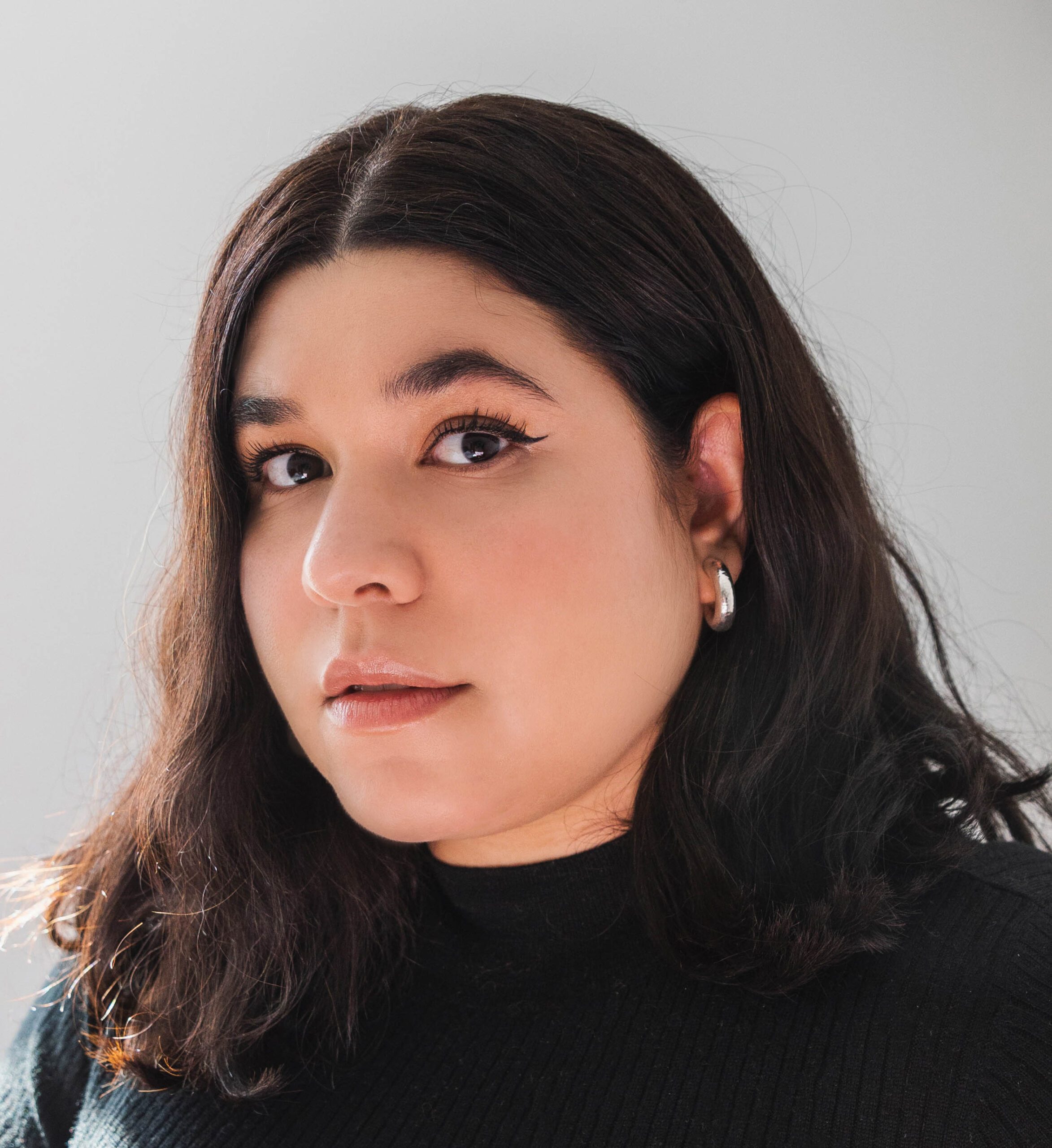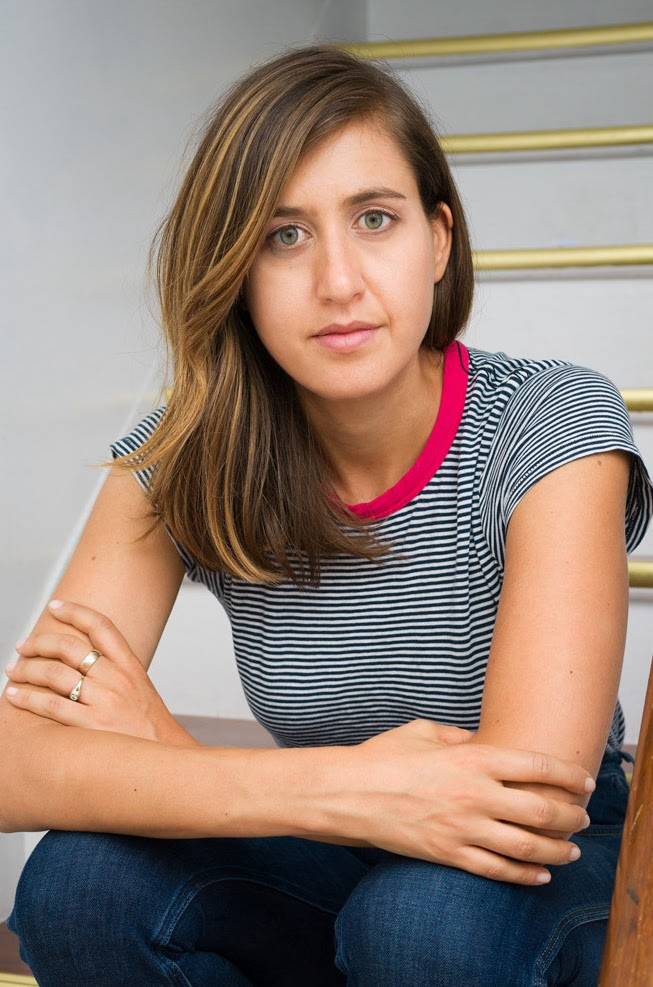The first time I stumbled upon Leslie Sainz’s poems, I sensed a poetic kinship, a deep resonance within her voice and form that embraced me. I found “Gusano” and “Sonnet for Ochún” in The Adroit Journal’s twenty-seventh issue, and ever since, I have found myself eager and enthusiastic to witness Sainz’s future work, which is why I was thrilled to read Sainz’s debut poetry collection, Have You Been Long Enough at Table (Tin House, 2023).
Formally dynamic and brimming with rich imagery and a masterful innovation of language, the book tackles a vast thematic variety. The daughter of Cuban exiles, Sainz writes about the private and political accounts that trace back to lineage. She tackles the complexities of displacement, identity, family, patriarchy, femininity, and spirituality.
Since first reading her work, Sainz has gathered an impressive list of accolades and publications, including being a recipient of a National Endowment for the Arts Poetry Fellowship and a three-time National Poetry Series finalist.
It brought me great joy to engage in a conversation with Sainz over email, as we delved into the origins of her collection, the significance of embracing risk, and her poetic journey leading up to the release of her debut and the horizons beyond it.
***
The Rumpus: Have You Been Long Enough at Table truly is an extraordinary debut! In the case of a poet’s first work, I find there’s often a profound personal urgency that drives the creation of the book. Could you kindly share some insights into the process of writing this collection?
Leslie Sainz: Oh, thank you so much, Aldo! All I’ve ever wanted was for someone to call this book “extraordinary” and now you’ve done it.

I think there were several profound personal urgencies that led to the making of Have You Been Long Enough at Table, and I’ll try to be succinct as I relay them. First, it’s become an important rite of passage for authors, maybe especially first-time authors, to invoke the spirit of Toni Morrison and say they wrote the book they most needed to read. I’m being clever, but that’s sincerely true for me too. Since high school, maybe, I’ve asked every creative writing teacher I’ve ever had if they could recommend to me a contemporary poetry collection written by a Cuban American woman and none of them—and I mean none—ever produced an appropriate title or author’s name from memory. I didn’t even complicate the ask by introducing stipulations on the book’s subject matter or author aesthetics! And I should say, I’ve had some astonishingly generous, well-read, and brilliant teachers.
This might be obvious or melodramatic or both, but the other “profound personal urgency”—I love this phrase—that comes to mind is death. This book took over eight years to write with a total of five different versions floating about. Each new iteration of the project was a direct response to my asking “I’m going to die one day, maybe even soon. Am I saying all I can? All I must?” Until version five, there was always more I was willing to risk.
Rumpus: I love that! I think so much of art stems from a deep acknowledgment of mortality and is made greater and more pressing with how much the artist is willing to risk. I also think heavily about the need for representation. What do you envision from other Cuban American poets to further fill in the canon? What might you point readers to who want to deepen their perspectives of writing Cuba?
Sainz: That’s exactly right. And I think there’s some serious connective tissue between these two points: writers, artists, work in resistance to their own mortality—they defy it through their artmaking. And if you’re an artist from a historically underrepresented population, struggling to find models of success who look like you, talk like you, or share some combination of your social identities, you feel your mortality that much more closely. The urgency to “legitimize” one’s self professionally, to prove what’s possible for someone like you, can be all-consuming, lonely.
It’s been a slow and demoralizing crawl, but the publishing industry is finally starting to recognize that Latine/Latinx people are not monolithic, that not all Latine poets are Chicane/x. Surprisingly, thankfully, 2023 has been a strong year for Cuban American poetry: Albion Books published Carolina Ebeid’s chapbook Dauerwunder, Seagull Books published Wendy Guerra’s Delicates back in June, Victoria María Castells’s The Rivers Are Inside Our Homes came out via University of Notre Dame Press in August, and Richard Blanco was awarded a National Humanities Medal and published a new and selected with Beacon in October. I’m cheating because this book is still forthcoming, but I am foaming at the mouth for Sara Daniele Rivera’s debut, The Blue Mimes, which Graywolf will publish in April of 2024.
Cuban American poetry is robust, elliptical, aching. I hope we continue to write towards and away from ourselves. I hope we continue to be published and recognized when we do the latter.
Rumpus: I have a great appreciation for exploring how works of art engage in dialogues with one another. Could you please elaborate on how you came to Hemingway’s quote from The Old Man and the Sea as the title for your collection?
Sainz: Truthfully, I’m still working out for myself what it means to have manufactured an intertextual relationship between my book and The Old Man and the Sea. The short of it is, I read The Old Man and the Sea for the first time in graduate school, at the encouragement of my father. Many years earlier, I’d tried to read For Whom the Bell Tolls (which, apparently, he partially wrote in Havana), but my interest waned, and I never finished it.
I found the rhythms of Santiago’s story [in The Old Man and the Sea] to be much more pleasurable, and when I came across the lines “Eat it so that the point of the hook goes into your heart and kills you, he thought. Come up easy and let me put the harpoon into you. All right. Are you ready? Have you been long enough at table?” I was struck by a profound spiritual understanding. In that moment, the title of my collection became known to me; I could hardly say I chose it.
Some days I’m fearful of this allusion appearing as an act of canonical presumption rather than one of socio-political reckoning, but then I remind myself, or am reminded, of all the white people I’ve encountered who reflexively bring up Hemingway when they learn I’m a Cuban American from South Florida. “Hemingway’s Cuba” does not appear in Have You Been Long Enough at Table. I granted myself the authority to take from him what served me and discard the rest.
Rumpus: In your book, you have a captivating focus on language, using repetition of sounds to generate new layers of rhythm and tension, exemplified in pieces like “Climate Feedback.” You blend English and Spanish seamlessly and in “Gusano (N),” you explore the multifaceted dimensions of the word, delving into both its literal and colloquial translation to examine issues of oppression. How would you describe the significance of continually defining and redefining language within the context of your overall poetic approach?
Sainz: I enjoy the thinking beneath this question and am flattered by it. My mind is alight with answers, and I think all of them lead back to my reverence for nuance and distrust of certainty. A significant portion of the book is dedicated to my parents’ unique immigration narrative and the life they patchworked for themselves and their children in the U.S. To capture their stories, I interviewed them separately, and they served as primary sources for their own lives. That kind of attention to accuracy, to portraiture, was noble in theory, but the reality is this: our accounts of our own lives are subject to the fallibility and fickleness of memory, to our egos, our politics.
Over time, the details of my mother and father’s early lives either revolved, faded entirely, or could only be expressed in Spanish. What they choose to remember about the environment in which they raised their children contradicts with my understanding of my own childhood. I feel strongly that our personal histories are made complete by their various discrepancies, not undermined by them. To tell these stories with any degree of confidence or ethics, the language we use to describe them most orbit all truths.
Rumpus: What was the most difficult part about writing these poems? Do you have any advice for poets struggling with similar difficulties?
Sainz: Transitioning from manuscript version two to manuscript version three might be the most difficult creative adjustment I’ve yet made. And again, the distance between these iterations can be measured almost entirely in risk. During this time, it became quite clear to me that this collection needed to name and confront the rampant political conservatism I grew up with—the one that still plagues most of my family members and much of the Cuban American population in this country. But none of that labor felt just or stable or worthwhile without thorough self-implication. Though I had no models for it, I knew the collection needed to trace the evolution of the primary speaker’s politics as it progressed, even if that meant a hesitant reader might abandon the collection early and misunderstand the guiding ethos of the book’s structure.
Maybe that’s where my advice folds in: always risk being misunderstood, especially when your integrity, your due diligence as an artist, is at stake. This is purely anecdotal, but I have this nagging suspicion that most American poets writing today are intentionally writing poems for readers who share their exact political values and highest degree earned. Personally, I’m interested in testing the limits of poetry’s ability to argue or persuade imperceptively. I’m invested in a future in which the greater poetry community is having more frank conversations around not just the education level of our audiences (see: those with proximity to “the academy”), but of other class indicators.
Rumpus: Risking being misunderstood is such important advice. I believe the best poetry allows for specificity but also a kind of ambiguity that enriches its interpretation that might differ between our audiences. Can you elaborate on what you imagine those frank conversations would include?
Sainz: Yes! This makes me think of something Louise Glück once said, an assertion I return to: “precision is not the opposite of mystery.” Thank you for calling me in around the conversations I want U.S. poetry and poets to be having! Some of the threads I have in mind include questioning why the larger Anglophone poetry world is acutely familiar with the happenings of American poetry, but contemporary Canadian and U.K. poets (and, frankly, international poets in general) are woefully untaught in American creative writing classrooms. More candid conversations about whether activist poetry is actually circulating in the communities that need it most, and conversations around why poets of color who frequently write about socioeconomic disparity are rarely included in discussions of working class poetry (as if the tradition exists solely to acknowledge white suffering). I could go on, but I fear I’m sounding more disgruntled than sincere.
Rumpus: Throughout Have You Been Long Enough at Table, there is a profound attention to space both physically for the speaker and visually within the page. In several instances, space functions as a constraining element for the speaker, such as the closet in “Notice to Appear” or the living room in “Self-Determination Theory.” How do you manage the concept of space when contemplating the broader themes in your collection and their interplay with poetic structure?
Sainz: It’s about sensation, isn’t it? Tricking the space of a poem, to me, is about coming into contact with the body. That can be literal—imagining where a reader will place their hands as they’re holding the book and wondering if their fingers might partially obscure a longer line. And if I choose the longer line, thinking about the spell that’s cast when I ask a reader to adjust a part of their body so they can get a better look.
Of course, it’s also theoretical, abstract—the codependent relationship between form and content. And like all codependent relationships, there are the harmonious periods where both parties feel so close to one another that their boundaries are no longer visible and more frequent seasons of conflict, where one party is deferential and passive, the other dominant, demanding. In my poetics, content is the narcissist and form is its caretaker. Caretaking is strenuous and bodily, and I like to think the positive and negative space of my poems ask all participants—author, speaker, reader—to similarly situate their bodies.
Rumpus: Speaking of form, I’m deeply intrigued by the sonnets composed for las Siete Potencias Africanas—who the sonnets in the collection are written for/with—the seven African powers of the Yoruban tradition—and the way they serve as a structural framework for the collection. How did the sonnet form contribute to the development of this sequence of poems?
Sainz: I just adore the sonnet form. It’s like the most beautiful box with the most beautiful ribbon and wrapping, and when you open it up there’s a human kidney inside. I’ve always been attracted to shorter poems, of which there are many in Have You Been Long Enough at Table, but it can be a challenge not to underbake them. Conversely, I find it near impossible to write a long poem because my impulse is always to say less. At some point in the writing process, I started to test the American sonnet as an incubator for just about every idea that revealed itself to me. I reckoned that if I couldn’t find a way to say what I needed to within fourteen lines, I had no business writing in that direction. Rigid, naive even, but immensely helpful to my understanding of how I typically enter and exit a poem.
The very first orisha sonnet was “Sonnet for Yemayá,” which poured out of me during a 30/30 I did in June of 2017. I was living in Miami at the time, caretaking my chronically ill parents, when I learned that my maternal grandmother, a distant and deeply private woman, kept a hidden altar in her Hialeah home decorated with offerings and statuettes of the seven African powers. I was shocked and saddened—shocked at my own sadness. That she had sequestered her practice, secreted it, was unfathomable to me. Naturally, I thought of my second cousin on my father’s side, Miguel Ordoqui, a vibrant queer artist who frequently painted the orishas (especially Yemayá, Shango, and Ochún) and his overtness in nearly all compartments of his life.
The series grew as an extension of their devotion and does so in a kind of persona. I have a theory that every line break is itself an elegy. This seems especially true of the sonnet, where the tension between the bottomlessness of desire and formal concision is both released and accelerated by a rhetorical turn. That’s how prayer works, in my experience. I think the most successful sonnets all end on their knees.
Rumpus: You’ve been recognized with fellowships from the Stadler Center for Poetry & Literary Arts at Bucknell University, CantoMundo, and others. Could you share your experiences of being part of these writing communities?
Sainz: To have received such affirming and, to my surprise, ongoing support from these communities—I still struggle to believe my own good fortune. I became a CantoMundo fellow shortly after completing my MFA, a famously vulnerable time. Off the heels of being asked in workshop “Why is there Spanish in this poem?”—having my work endorsed by one of the few organizations dedicated to Latine poets—was nothing short of a lifeline. Through this affiliation, I’ve had the privilege of meeting and getting to know fellow Latine poets, editors, teachers, and programmers like Ricky Maldonado, Suzi F. Garcia, Malcolm Friend, Gerardo Pacheco, and others, folks whose contributions to contemporary letters are wide and growing still.
Though I was twenty-six at the time, I almost feel as though I came of age during my Stadler fellowship. I’d just entered family systems therapy for the first time. I was mourning the loss of a ten-year friendship. The luxury of only being responsible for my person and my poems made everything around me shine and burst. The warmth and selflessness of the Stadler Center staff, folks like Andy Ciotola and Katie Hays, kept me grounded and encouraged. I lived in a two-story cottage owned by the university, the Poet’s Cottage, and built treasured friendships with the Philip K. Roth residents who lived below me, the divine Aurora Masum-Javed and Sophie Klahr. I fell in deep platonic love with the other Stadler fellow, Jan Verberkmoes, who remains one of my nearest and dearest friends and the best reader of my work. Through the Stadler Center Writers Series and Seminar for Undergraduate Poets, I met and broke bread with literary heroes like Anne Carson, Jennifer Chang, Aracelis Girmay, Donika Kelly, Victoria Chang, and Eduardo Corral. I worked closely with ten remarkable young poets, who continue to write and publish exceptional work. My fellowship year was too good and true.
Rumpus: I can’t wait to read more from you. Are you currently working on any new projects?
Sainz: Right now, I’m having a great deal of fun writing persona poems in the voice of an American inspirational speaker known for popularizing the concept of the law of attraction. She claims that she can interpret “the omnipresent laws that govern [the] universe” from a nebulous spirit of “infinite intelligence,” and passes along this knowledge through her books and costly in-person workshops and cruises. It’s an exhilarating project that concerns itself with whiteness, “wellness,” spiritual capitalism, cult-susceptibility, fathers and daughters, and the way gender operates in the esoteric healing arts.
***
Author photograph by Hillary Dubie




